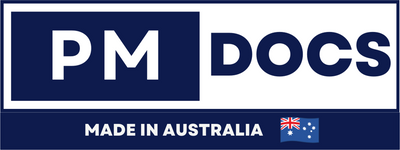Case Study: Successful GDPR Toolkit Implementation In Australia
Introduction
In an era of heightened data privacy concerns, the General Data Protection Regulation (GDPR) has become a benchmark for data protection standards across the globe, including Australia. This case study explores the successful implementation of a GDPR toolkit by a prominent Australian company, showcasing best practices, challenges faced, and the outcomes of such an initiative.

Company Background
The case study centers around XYZ Corporation, a leading software development firm based in Sydney, Australia. Established in 2010, XYZ Corporation has grown significantly and now serves clients both locally and internationally. Given its expansion into European markets, the company recognized the importance of complying with GDPR to protect consumer data and maintain its reputation.
The Need For GDPR Compliance
With the introduction of GDPR in May 2018, companies engaging with European customers were required to align their data protection policies with stringent regulations. For XYZ Corporation, compliance was not only a legal obligation but also a critical factor for maintaining trust with clients and customers. The company faced potential penalties for non-compliance, which could have severe financial and reputational repercussions.
Implementation Of The GDPR Toolkit
To navigate this complex regulatory landscape, XYZ Corporation adopted a comprehensive GDPR toolkit developed by an external consultancy specializing in data protection. The toolkit included the following components:
1. Data Inventory and Mapping - XYZ Corporation began by conducting a thorough inventory of its data systems and processes. The consultancy assisted by providing templates and methodologies to identify where personal data was stored, how it was processed, and the flow of information across departments.
2. Risk Assessment - A risk assessment was conducted to identify potential vulnerabilities in data handling and processing methods. This assessment helped prioritize areas for improvement, ensuring that resources were allocated effectively.
3. Policy Development - The toolkit facilitated the creation of new data protection policies tailored to the regulations outlined in GDPR. This included data retention policies, data subject rights (such as access and erasure), and breach notification protocols.
4. Staff Training and Awareness - To ensure everyone within the organization understood their role in protecting personal data, a series of training sessions were conducted. Employees were educated on GDPR requirements, data handling best practices, and the significance of maintaining data privacy.
5. Continuous Monitoring and Improvement - The toolkit emphasized the importance of continuous improvement. XYZ Corporation established a regular audit schedule and developed a feedback loop for ongoing evaluation of compliance practices.
Challenges Encountered
Despite the successful implementation, XYZ Corporation faced several challenges during the process:
1. Resource Allocation: Allocating appropriate resources and time for compliance activities was a challenge, particularly with ongoing projects and the need to maintain regular business operations.
2. Cultural Shift: Transitioning the organizational mindset to prioritize data privacy required time and effective communication. Gaining buy-in from all employees was crucial for success.
3. Keeping Up with Changes: Data protection regulations are continually evolving. Staying ahead of regulatory changes and ensuring ongoing compliance added an additional layer of complexity.
4. Outcomes and Benefits: The implementation of the GDPR toolkit led to several positive outcomes for XYZ Corporation:
5. Enhanced Reputation: Demonstrating compliance with GDPR standards improved the company’s reputation among clients, particularly in Europe where data protection is highly valued.
6. Reduced Risk of Penalties: By proactively adopting data protection measures, the company significantly reduced its risk of incurring penalties associated with non-compliance.
7. Increased Customer Trust: Customers gained confidence that their personal data was being handled responsibly, which led to improved customer retention and satisfaction.
8. Operational Efficiency: The process of auditing and mapping data led to more efficient data handling practices, benefiting overall operational effectiveness.
Lessons Learned & Key Takeaways
1. Data Governance Framework
The establishment of a robust data governance framework is essential. XYZ Corporation developed clear policies regarding data collection, processing, and storage, ensuring transparency and accountability. Australian businesses should adopt a similar approach—creating comprehensive guidelines that dictate how data should be handled.
2. Employee Training and Awareness
One of the cornerstones of XYZ Corporation's success was the emphasis on training employees about GDPR regulations. Regular workshops and training programs ensured that staff members understood their roles in data management. Australian businesses should consider investing in their workforce through regular training sessions on data privacy principles.
3. Technological Integration
The integration of advanced technological solutions was pivotal in achieving compliance. XYZ Corporation leveraged various tools to automate data handling processes, ensuring minimal human error and improved efficiency. Australian companies can benefit from similar technological advancements by investing in data management systems that facilitate compliance and streamline operations.
4. Customer Engagement and Transparency
Effective communication with customers about data handling practices fosters a sense of trust. XYZ Corporation maintained open channels with its clientele, providing clear insights into how their data was being utilized. Australian businesses must prioritize transparency, letting customers know how their personal data is collected, used, and stored.
5. Continuous Improvement and Adaptation
GDPR is not a one-time implementation; it requires ongoing evaluation and adjustment according to regulatory updates and evolving business needs. XYZ Corporation committed to regular reviews of its data protection policies, ensuring agility in response to changes. Similarly, Australian businesses should adopt a culture of continuous improvement, actively seeking ways to enhance their data protection measures.
Conclusion
The successful implementation of a GDPR toolkit at XYZ Corporation highlights the importance of data protection compliance amidst growing privacy concerns in a global marketplace. This case study serves as a valuable reference for organizations navigating similar regulatory landscapes, illustrating that while challenges exist, the benefits of adherence to data protection laws far outweigh the obstacles. The commitment to enhanced data privacy not only fosters trust but also positions companies for future growth in an increasingly digital world.




